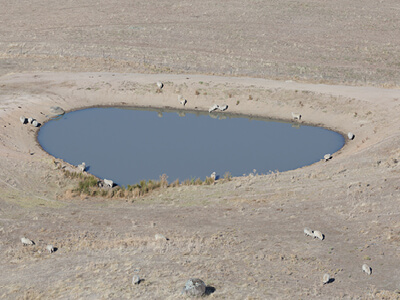Stock water requirements in drought
As part of your on-farm drought management plan, you should consider how you are going to prepare for ongoing periods of dry weather. This includes looking at how you source water, which are reliable sources and will get you through prolonged periods of dry weather, and what the water requirements are for livestock on your farm.
In drought, stock water requirements are higher and the amount of water that cattle and sheep drink per day may increase or double. Producers number one priority in dry times should be to ensure there are adequate amounts of good quality water available to stock to reduce the risk of decreased productivity and compromising livestock health.
Water quality for livestock
Stock water requirements are higher in drought due to the more fibrous and less digestible feed options available. Access to good quality water that is fresh, cool and clean is imperative to allow these coarse feed types to digest and maintain movement in the gut.
With water quality being paramount during drought, there are many factor’s producers should be aware of that can influence water quality, including:
- salinity
- pH
- nutrient imbalances (especially nitrogen, phosphorus, chloride, iron etc)
- blue-green algae
- faecal contamination and pathogens
- toxic residues and compounds
- water temperature
- turbidity.
Water quality should be closely monitored weekly during drought to check for changes in these areas.

Livestock water consumption
How much water cattle and sheep require on a daily basis during drought can largely depend on whether:
- they are large or lactating
- they are feeding on dry feed or saltbush
- the drinking water is saline
- the weather is hot.
Daily consumptions rates of livestock are outlined in the table below.
| Stock type | Consumption per head/per day (L) |
|---|---|
| Sheep | Up to 4 |
| Adult Dry Sheep | Up to 6 |
| Ewes with lambs | Up to 10 |
| Lactating cows | Up to 100 |
| Weaner cattle | Up to 50 |
| Yearling cattle | Up to 80 |
| Horses | Up to 50 |
Poor water quality and unclean water access points can also deter livestock, leading to reduced consumption of both feed and water. Managing feeding through drought is important, but maintaining livestock drinking water standards is equally, if not more important as it can result in livestock being unable to gain weight and lead to ongoing health and performance issues.